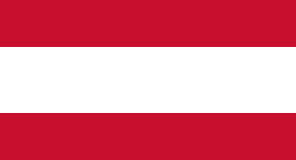Austria
Green Hydrogen Vision
Austria's green hydrogen vision is centered on achieving climate neutrality by 2040 by integrating hydrogen as a key element of its energy transition. The strategy prioritizes the production and use of climate-neutral hydrogen, primarily generated through renewable energy sources like electrolysis. It aims to install 1 GW of electrolyser capacity by 2030 and replace 80% of fossil-based hydrogen in energy-intensive industries within the same timeframe. Austria envisions hydrogen playing a critical role in decarbonizing hard-to-electrify sectors, such as heavy industry, long-haul transport, and aviation, while supporting energy storage for grid stability. By fostering international partnerships, advancing hydrogen infrastructure, and promoting research and innovation through initiatives like the H2Austria platform, Austria seeks to establish itself as a leader in the global hydrogen economy while reducing reliance on imported fossil fuels.
National Strategy
The 2022 Hydrogen Strategy for Austria outlines the country’s vision to achieve climate neutrality by 2040. It emphasizes the role of hydrogen in decarbonizing hard-to-electrify sectors, promoting technological innovation, and securing energy independence.
- Support early investment in hydrogen through flagship projects and market-based incentives.
- Promote renewable hydrogen production by creating a favourable regulatory and financial framework.
- Encourage international cooperation to integrate Austria into the European and global hydrogen economy.
- Establish a dedicated hydrogen platform, H2Austria, to coordinate national efforts and innovation.
This strategy provides a comprehensive roadmap for integrating hydrogen into Austria's energy system while maximizing its contribution to environmental and economic goals.
Capacity Targets
Electrolyser Capacity:
- Installation of 1 GW of electrolyser capacity by 2030 to produce renewable hydrogen.
Replacement Goals:
- Replace 80% of fossil-based hydrogen with climate-neutral hydrogen in energy-intensive industries by 2030.
- Projected demand for climate-neutral gases 2040 (base scenario)- 138 TWh
- Projected demand for climate-neutral gases 2040 (exergy scenario)- 89 TWh
- Hydrogen injection in natural gas network 2030- >10%
- Replacement of ‘grey’ H2 in industry with climate neutral H2 by 2030- 80%
Infrastructure Development:
- Gradual conversion of the natural gas infrastructure into a targeted hydrogen network, with assessments for new hydrogen infrastructure needs.
Impact Targets
Climate Goals:
-
Achieve climate neutrality by 2040, leveraging hydrogen as a key decarbonization tool.
Sectoral Focus:
Prioritize hydrogen for:
-
Industrial sectors: Iron, steel, and chemical industries requiring high-temperature processes.
-
Transportation: Long-haul trucking, aviation, and shipping.
-
Energy Storage: Seasonal balancing and grid stability within a renewable energy system.
Economic and Innovation Outcomes:
-
Strengthen Austria's position as a climate-neutral industrial hub by advancing hydrogen technologies and fostering international cooperation.
-
Enhance research and development (R&D) efforts to innovate in hydrogen-related technologies, particularly in mobility and energy systems.
Energy Security:
-
Integrating hydrogen into Austria's energy mix and exploring partnerships for climate-neutral hydrogen imports will reduce dependence on imported fossil fuels.
Policy Spotlight
- Spain, Lithuania, and Austria are collaborating with the European Hydrogen Bank on the ‘Auctions-as-a-Service' scheme to increase funding for clean energy investments. Today, the European Commission and Spain, Lithuania, and Austria announced new financial support for developing renewable hydrogen through the Innovation Fund. These three member states will participate in the ‘Auctions-as-a-Service' scheme as part of the second European Hydrogen Bank auction, which will launch on December 3rd.
- HydrogenPro, a leading manufacturer of electrolyser technology, has partnered with J.H.K., a well-established company in industrial plant construction and engineering. This exclusive collaboration focuses on implementing green hydrogen projects in Germany, Austria, and the Benelux countries. HydrogenPro will provide its advanced high-pressure alkaline electrolyser technology as part of this partnership. At the same time, J.H.K. will serve as the plant integrator and EPC (Engineering, Procurement, and Construction) contractor, overseeing project execution and ensuring successful delivery to customers. The collaboration targets green hydrogen projects ranging from 5 to 50 MW. Combining HydrogenPro's expertise in electrolysis technology with J.H.K.'s extensive experience—spanning over a century—in the Balance of Plant and EPC services, this partnership aims to accelerate the adoption of sustainable energy solutions across Europe.
Financing
- Austria is committing €400 million from its national budget to the Auctions-as-a-Service scheme. Hydrogen producers will be eligible for a maximum grant of €200 million per project, with a maximum capacity of 300 megawatts of production to be supported in this auction.
- The Austrian government has increased funding for green hydrogen production subsidies, as announced today by Finance Minister Magnus Brunner. A draft law unveiled last week proposes €400 million ($438.5 million) in subsidies through the EU’s European Hydrogen Bank (EHB) over the next ten years, at €40 million annually. Starting in 2027, this amount will rise to €100 million per year. Brunner noted that the Hydrogen Promotion Act is expected to be passed quickly, and the total funding will increase by €420 million to reach €820 million, enhancing the competitiveness of renewable hydrogen production in Austria.
Government Green Hydrogen Lead
Federal Ministry for Climate Action, Environment, Energy, Mobility, Innovation and Technology
